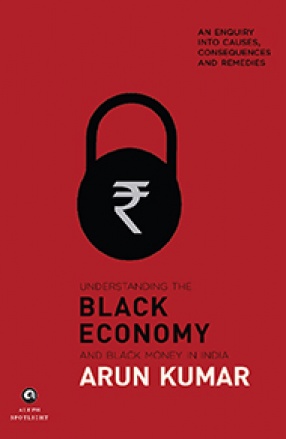Understanding the Black Economy and Black Money in India: An Enquiry into Causes, Consequences and Remedies
The Narendra Modi government’s sudden demonetization of Rs. 500 and Rs. 1,000 notes in November 2016 failed to put a dent in the black economy but caused untold hardship to hundreds of millions of Indians. It has crippled the country’s economy for a long time to come. In this book, Arun Kumar, the country’s leading authority on the black economy, tells us why Modi’s gambit failed. He shows us the way in which the problem can be rooted out, provided the government has the political will and determination to act.
Today, the black economy is estimated to be 62 per cent of GDP-or about Rs. 93 lakh crore ($1.4 trillion). Corrupt businessmen, corrupt politicians, and corrupt members of the executive (bureaucrats, police and the judiciary) are responsible for controlling the black economy and enabling its growth. If the black economy were to be dismantled and turned into a part of the ‘white’ economy, the country’s rate of growth would be 12 per cent. If it had not grown the way it has since the 1970s, India’s per capita income today would be approximately Rs. 7 lakh per annum ($11,000) and India would become the second largest economy in the world. If the black economy were taxed at current rates, it would generate Rs. 37 lakh crore in additional taxes and the union budget would show a surplus of Rs. 31 lakh crore instead of a deficit.
The failure of successive governments to tackle the problem effectively has been the single biggest obstacle to eradicating poverty. It is the cause of both widespread policy failure and the inability of the nation to improve its living conditions rapidly.
Get it now and save 10%
BECOME A MEMBER








Bibliographic information